Sitting down and going on a pilgrimage are similar practices. As pilgrims, we know the second one very well… and we’re all more or less addicted to it! Unfortunately, it’s difficult to go on the Camino as often as we would like. But what if Santiago wasn’t as far away as we think it is?
Let’s think about it: what is a pilgrimage? It’s a journey, a dedicated movement towards a place that carries some meaning… But who said this movement had to be a physical one?
Imagine, if you could “go to Santiago” anytime. If you could be back on the Camino as soon as you start to miss it. Am I rambling? Well, no! All you have to do is to sit down. And that’s enough… sort of.
How about we talk about it? Let’s share some thoughts on the spiritual dimensions of both pilgrimage and mindful sitting, as well as their respective practices 🙂
This post started on social media, with a picture and quote about pilgrimage. The picture was nice, the quote even more!
It instantly spoke to me and echoed my own view of the Camino. It talked about what a pilgrims is in its essence, a deep spiritual practice… All of this in a simple but poetic and elegant sentence:
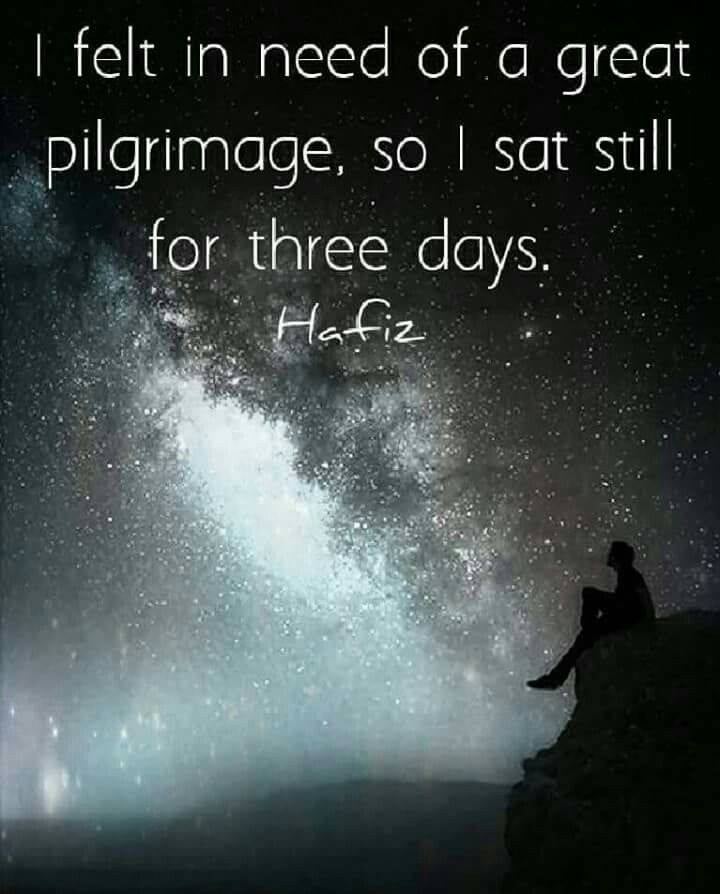
Amazing! But… a need of a pilgrimage that pushes someone to sit down? Here’s the immediate reaction of a regular follower:
“🤔🤔”
And yes, at first glance, he’s right! Especially in the context of the Camino, where the goal of the pilgrimage is in theory to go and arrive in Santiago.
If we define a pilgrimage as a physical movement, stopping all movement doesn’t make any sense…
The full dimension of a pilgrimage
To make sense of the “absurd”, we only need to give its spiritual dimension back to the pilgrimage.
Our quote, when complete, makes this perspective pretty clear. It goes as follows:
I felt in need of a great pilgrimage, so I sat still for three days… and God spoke to me
When you hear it like that, it’s impossible to miss the fact we’re actually talking about a spiritual activity!
(Psssst! If the word “God” burns your eyes, forget about it and go beyond the word, to “this” that it represents!)
What makes a pilgrimage is not to physically go from A to B. The everlasting debate over “tourist-hiker-pilgrim” proves just that! All of them move along the same path. But not all of them feel like they are “pilgrims” or are considered as “pilgrims” by those around them.
“Something” ethereal is happening when we go on the Camino, everyone feels it pretty clearly! And that’s a good start to grasp the full meaning of our quote and to understand what links a pilgrimage to the act of sitting down.
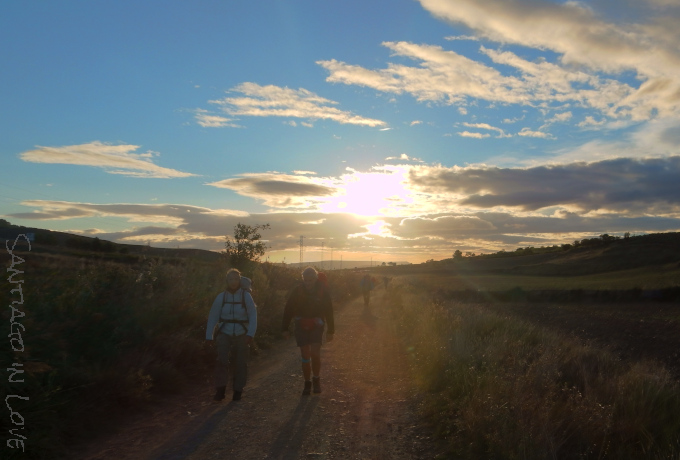
Marion, Santiago in love ~ CC BY-NC-SA
A pilgrimage is inherently a spiritual practice. But among all practices, it reflects particularly well the inner journey that is taking place when one engages in a spiritual process.
Because if a pilgrimage can’t be reduced to a physical movement from A to B, it’s a movement alright! A movement of our soul towards “something”.
Religious traditions agree about that: to open from within, head towards “It” and experience it is everything a pilgrimage is about.
It’s this inner purpose that gives meaning to a pilgrimage, as well as a new depth to its practice.
The pilgrimage to Santiago is no exception.
In the past, people were going to Santiago for St. James, not “his Camino” (that didn’t exist at the time). Christianity, its dogmas and traditions were the “only” way to experience a spiritual journey. In this context, the relics were the only spiritual purpose of the pilgrimage to Santiago, because the relation pilgrims had to “It” had to go through religion and the apostle. (*)
Nowadays, pilgrims go to Santiago more and more for “spiritual reasons” and less and less for “religious reasons”. Those reasons are most often not too clear for pilgrims, but they do feel their importance and their depth. The experience of the Camino has become more important than to visit the apostle: pilgrims bypass religion and St. James to experience “It” in a more direct way during their pilgrimage.
(*) Yes, I’m taking some historical short-cuts here, but I’m sure you get what I mean 😉
So, walking the earth helps us to move forward within ourselves.
When we go to Santiago, we’re giving ourselves time to slow down, to be fully present and to dive within ourselves. To stop to be taken up by everyday stimuli and duties. We are giving silence and peaceful paths the opportunity to help us to be here, really and simply, and to (re)discover our inner life. To have a glimpse or to experiment the density of Being. It’s also going beyond our Self and feeling a connection with “Something” that goes beyond our tired bodies and minds.
Every step brings us towards a greater opening, a greater availability to be mindfully present. And eventually, to be touched by “It”.
It can take time of course, but for some, a pilgrimage becomes an opportunity to accept this invitation to let go and to actually experience a moment of Grace.
Sitting down
Until now, I only spoke about pilgrimages because as I said earlier, the experience of the Camino is a good start to get our quote. And by extension, to grasp what the practice of mindful sitting is.
So, going towards “It” and to experience it is the meaning of a spiritual practice. A pilgrimage is beautiful way to work on our relationship to the ethereal, the Camino is proof of that. Well, mindful sitting is another way!
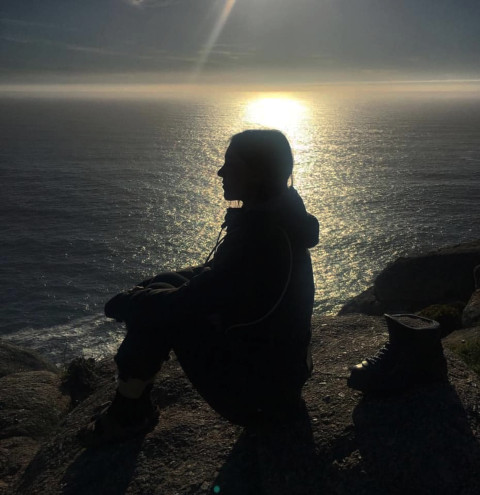
Photo: Viottins
There’s a link between mindful sitting and meditation. It’s actually… the same thing.
Meditation has become a popular trend these past decades and is mostly considered as a recently imported Eastern tradition. For some, it lost its spiritual dimension to become a “secular” tool used for relaxation or personal development.
But on the contrary, meditation can actually be found in Western civilization as early as the Antiquity and it remains inherently a spiritual practice. It’s in this way I talk about it here!
Of course, it’s not just about sitting down and waiting for “It” to hit you! Remember, a pilgrimage is essentially an movement within that is directed towards “It”. All the same, the practice of mindful sitting is to work towards the same goal, without any physical movement. It’s like walking a whole Camino, without taking a single step.
Concretely, the practice of mindful sitting is really similar to the one of the pilgrimage.
When we sit down, we’re giving ourselves time to slow down to be fully present and to dive within ourselves. To stop to be taken up by everyday stimuli and duties. We are giving silence the opportunity to help us to be here, really and simply, and to (re)discover our inner life. To have a glimpse or to experiment the density of Being. It’s also going beyond our Self and feeling a connection with “Something” that goes far beyond ourselves.
Mindful sitting brings us towards a greater opening, a greater availability to be fully present. And eventually, to be touched by “It”. And for some, sitting becomes an opportunity to accept this invitation to let go and actually experience a moment of Grace…
Does it reminds you of something? It’s only fair as it’s a copy, nearly word for word, of the description of a pilgrimage I wrote earlier! 😉
Pilgrimage and mindful sitting are very similar, apart from the fact that a pilgrimage “forces” pilgrims to experience their interiority while mindful sitting implies a intentional action and a greater conscience of its practice.
In other words, if you can become a pilgrim in spite of yourself when you go on the Camino, you have virtually no chance to become a meditator by chance in your daily life…
You may think of this effort as a inconvenience but it’s actually a real advantage! Yes it is! With a little bit of practice, you can indeed just chose to meditate and here you are! You can be on a pilgrimage, living the Spirit of the Camino, living “It”, instantly and without moving from where you are.
Note the “with a little bit of practice“… Your body needs a few days (weeks!) to adapt to the physical effort a Camino represents. Just as well, your mind will need a bit of time to adapt to the mental and spiritual exercise mindful sitting represents.
You can simply start by creating a quiet moment for yourself in your daily routine, to reconnect to your experience of the Camino that is always alive within you.
Rather that connecting to your memories and “see” them like you would a movie, try to relive and feel again what you experienced. Put aside what you “did” to find again what you “were”.
Remember what the Camino allowed you to Be (joy, peace, fraternity, enthusiasm, mindfulness, awe, and so on) then work at “Being those states”, here and now.
Step by step, you will manage to “Be those states” more easily and keep yourself in those states for longer periods of time. Eventually, you may be able to open yourself sufficiently to let “It” touch you.
This all may seem easy at first glance but actually, going from a memory to a state of being reminiscent of that memory is not so simple… What need to happen is to leave the Mind to enter the Heart. It’s also more difficult to keep this state of being when there’s no context that help it be (like when you’re on the Camino!)
Going to Santiago makes this transition Mind-Heart easier and helps us to live with an open heart while on the Camino, but it’s a quality of Being we are not used to manifest in our daily lives…
Practicing mindful sitting allows us to train ourselves and helps us to connect and be this quality of Being, even when we’re away from the Camino.
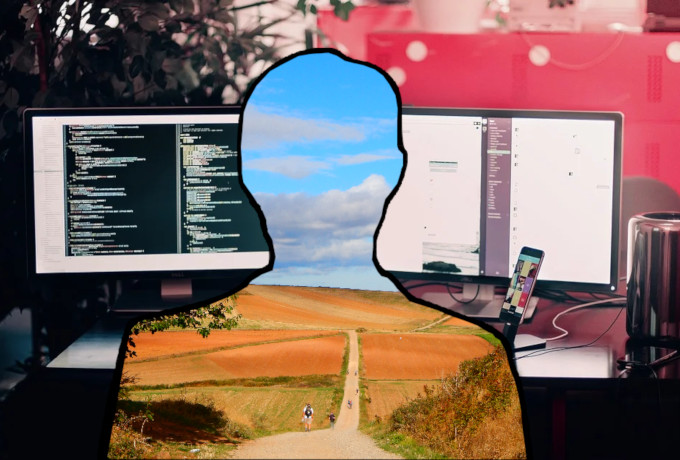
Marion, Santiago in Love ~ CC BY-NC-SA
A last comment before we finish this part… I’ve been talking about sitting because it’s the most common way to practice mindfulness and meditation. It may also be the easiest way to get started. But you can absolutely do it differently! For example, while walking, waiting in line or in your car, gardening or doing chores.
The important thing is, especially at the beginning, to create a quiet place with no solicitations to help you focus on your practice.
Mindful sitting and pilgrimage, two practices that complement each other
So… here we are, at the opposite of our first thoughts. “Sitting down to go on a pilgrimage” doesn’t seem so absurd anymore! Of course, no need to sell your backpack and shoes to dedicate yourself to meditation only 😉
It’s more an invitation to practice mindful sitting while you continue to peregrinate anytime you can.
It could give a new dimension to your experience of the Camino. It would help you to be more present and to immerse yourself in this quality of Being we all feel so strongly on the Camino.
The positive effect of your meditation would be even more obvious once you’d come back from your Camino! Every pilgrim went through some post-Camino blues and longed for what they lived there… It would be a precious gift indeed to be able to reconnect to that experience, a gift that would surely help you to keep the Camino alive within you!
Sit down and go!
Let’s conclude this post with a beautiful excerpt of Sitting and walking by Jean-Yves Leloup, a simple and poetic text on the same topic than our discussion☺️
~~~~~
“Sit down and go!“
Those words I heard when I was 19 continue, 40 years later, like a inspiration, to pull me higher and forwards.
It took me some time to understand it and more particularly, to live it.
“Sit down” doesn’t mean to remain seated.
“Go” doesn’t mean to go somewhere.
“Sit down” is to be centered, amidst the flow and forthcoming of Life.
“Go” is to be at home in the movement of Life as it offers itself to us
“Sit down”: “I am”
“Go”: “I will be”
Aren’t sitting down and going the involvement and growth, within who practices them, of a true presence to the being “who was, who is, who will be”, as said in the Revelation?
“Along the way”, those words sometimes sounded less like a biblical verse and more like a poem from Baudelaire: “Be quiet and more discreet, O my Grief”, sit down, hear Life, the greater Life that moves on…. Sometimes we need to stay still to go on, “it” goes on…
The dedication to those daily practices of sitting and walking revealed to me the meaning of my “passage” on Earth: “embrace” Life, what it is, what it will be: “I am/I will be”…
“When you reach the top of the mountain, don’t stop.”
Is it an invitation to go higher or to come back down? Probably both, as sitting and walking are an invitation to make opposite agree: not only immobility and movement, but also all that makes our life.
It is about acquiring a look that doesn’t confuse nor oppose things.
Our joint practice of sitting and walking should lead us towards this place within; further, beyond opposites we call the “center” or “the heart’s eye”; towards this place where that look is born, both new and eternal.
A life without a center is a life without meaning. Peace is to be wholeheartedly here…
Do something without being centered (distracted), do the same thing and be centered (attentive) – see the difference! What is important, whatever your practice is, it is to be centered.
Sitting without heart is a boring verticality.
Walking without heart is an fruitless horizontality.
The center is not a specific point in the body, but an opening. A space in which we welcome all that is, with lucidity, gratitude and compassion. It is to hold yourself where the Cosmos is; or it is the act of immobility, Aristotle’s pure and primary act “that makes the earth, people’s heart and stars go round”… If it’s not Love, it looks like it…
Sit, walk, breathe “lovingly” on the earth, under the sky, in the Breath… All is absurd, all is Grace.
~~~~
May your meditations and pilgrimages open your heart!
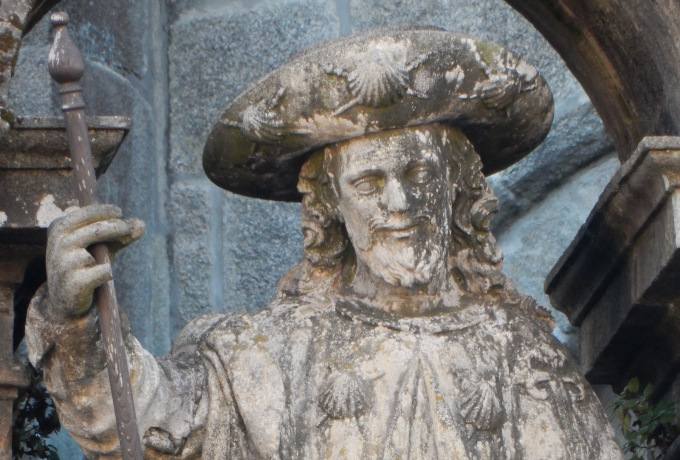
And you? Do you feel your Camino has a spiritual a spiritual dimension (even if you don’t have religious believes)?
Have you experimented an opening of heart or consciousness before, or lived a instant of Grace on your Camino?
Do you practice meditation (or something similar), or do you think it could help you keep your Camino alive within yourself, even in your daily life?
Tell us in the comments! 🙂
Hafez: Persian poet, philosopher and Sufi mystic, 14th century. His work is still vivid today and especially known for his poems that describe spiritual ecstasy.
Jean-Yves Leloup: contemporary French writer, philosopher, theologian and Orthodox priest. His teachings are rooted in Christian tradition but are open to a spirituality that goes beyond any religious affiliation.
More: official website

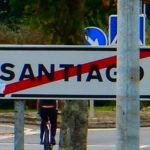
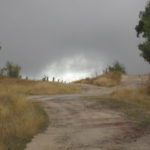
![[2016] Ending of the Jubilee of Mercy on the Camino [2016] Ending of the Jubilee of Mercy on the Camino](https://santiagoinlove.com/en/wp-content/uploads/sites/3/2016/11/Santiago-porte-sainte-fermee-150x150.jpg)
